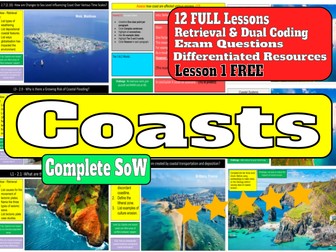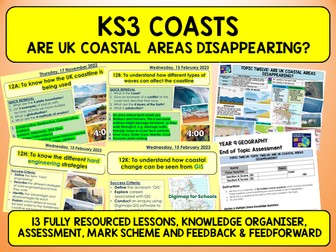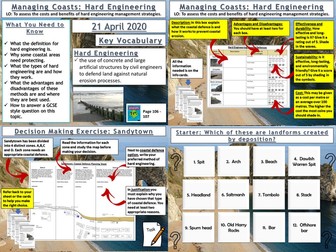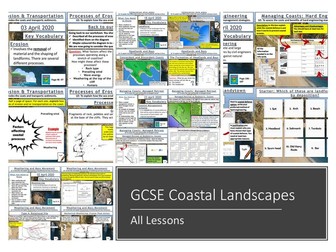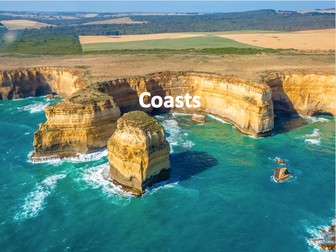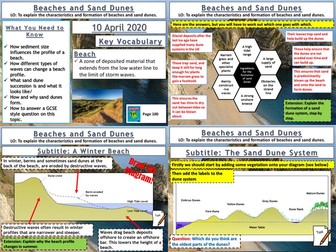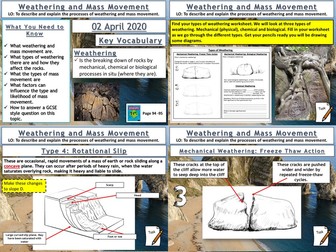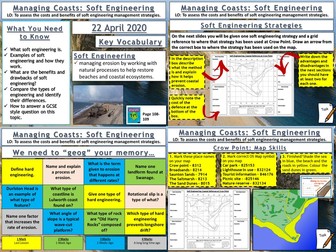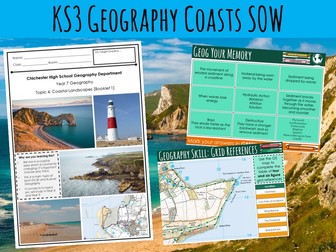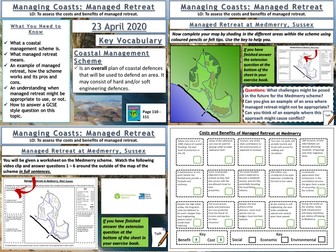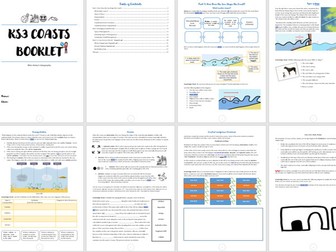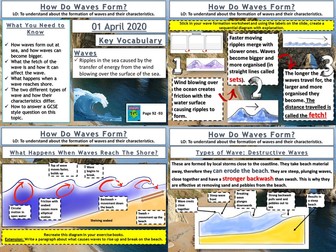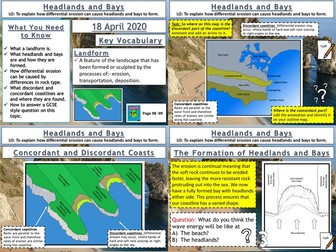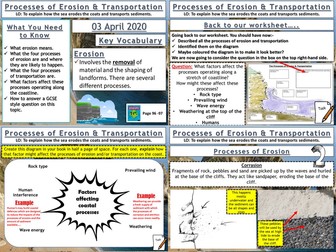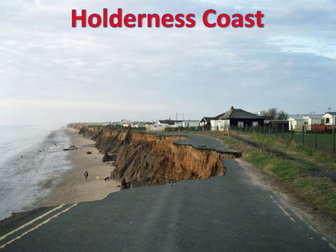Bundle
Coasts Edexcel
<p>Edexcel A-level</p>
<p>Topic 2: Coasts</p>
<p>Lesson 1 - Free - L1 - 2.1 -What are the Coast Distinctive Landscapes?</p>
<p><a href="https://www.tes.com/teaching-resource/resource-12638753">https://www.tes.com/teaching-resource/resource-12638753</a></p>
<p>This SoW has been created to meet the teaching requirements of Topic 2: Coasts, which is a component of the Geography Edexcel A-level course.</p>
<p>This SoW is designed in detail and is both differentiated and engaging, and allows you to move pupils through content efficiently. As a result, lessons take around two hours to deliver and hit the required components of the syllabus (see syllabus code).</p>
<p>Made to a high standard and constructed using current research, both dual coding and retrieval practices are at the heart of this unit. A colour scheme also runs throughout to ease both your delivery and students comprehension.</p>
<p>A KS3 SoW has also been include free…</p>
<p>This resource is a part of a scheme that covers the entire A-level topic (Water Security), which can be viewed using the link below:</p>
<p>L1 - 2.1 -What are the Coast Distinctive Landscapes?<br />
L2 - 2.2 + 2.3 - What role does Geology Play in Affecting Coastal Landscapes?<br />
L3 - 2.4 - How does Coastal Erosion Create Distinctive Landscapes?<br />
L4 - 2.5 - What landforms are created by coastal transportation and deposition?<br />
L5 - 2.6 - How do subaerial processes influence coastal landforms?<br />
L6 - 2.7 (2.10)- How are Changes to Sea Level Influencing Coast Over Various Time Scales?<br />
L7 - 2.8 (2.10) - How Does Rapid Coastal Retreat Cause Threaten Coastal Communities?<br />
L8 - 2.9 - Why is there a Growing Risk of Coastal Flooding?<br />
L9 - 2.11 - How are Coastal Recession and Flooding Affecting Communities?<br />
L10 - 2.12 - Why are Coasts Increasingly Managed by ICMZ?</p>
<p>I’m happy to answer any questions you may have prior to purchase and any feedback is of course welcome…</p>
<p><a href="mailto:thegeographyshoporiginal@gmail.com" target="_blank" rel="nofollow">thegeographyshoporiginal@gmail.com</a></p>
<p>Best <strong>FREE</strong> Resources (The Geography Shop)</p>
<ul>
<li><a href="https://www.tes.com/teaching-resource/-12899088">https://www.tes.com/teaching-resource/-12899088</a> (Climate Change SoW)</li>
<li><a href="https://www.tes.com/teaching-resource/-12899440">https://www.tes.com/teaching-resource/-12899440</a> (Development SoW)</li>
<li><a href="https://www.tes.com/teaching-resource/-12638984">https://www.tes.com/teaching-resource/-12638984</a> (Waste SoW)</li>
<li><a href="https://www.tes.com/teaching-resource/-12451443">https://www.tes.com/teaching-resource/-12451443</a> (Britain Globalisation SoW)</li>
<li><a href="https://www.tes.com/teaching-resource/-12741793">https://www.tes.com/teaching-resource/-12741793</a> (Local Area Investigation SoW)</li>
<li><a href="https://www.tes.com/teaching-resources/bundler/12949461">https://www.tes.com/teaching-resources/bundler/12949461</a> (Cambridge International)</li>
<li><a href="https://www.tes.com/teaching-resource/-12922653">https://www.tes.com/teaching-resource/-12922653</a> (Israel & Palestine)</li>
<li><a href="https://www.tes.com/teaching-resource/resource-12485457">https://www.tes.com/teaching-resource/resource-12485457</a> (What is Geography?)</li>
</ul>
<p>I hope you find this SoW useful. If you have, I have created a series of resources.<br />
You can check them out here.</p>
<p><a href="https://www.tes.com/teaching-resources/shop/TheGeographyShopOriginal">https://www.tes.com/teaching-resources/shop/TheGeographyShopOriginal</a></p>
